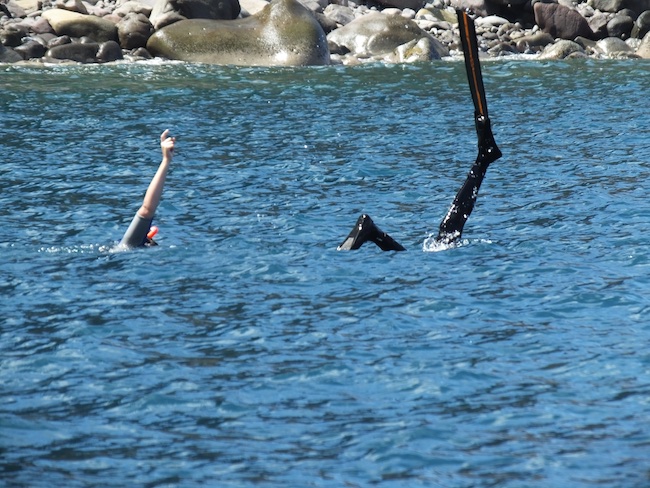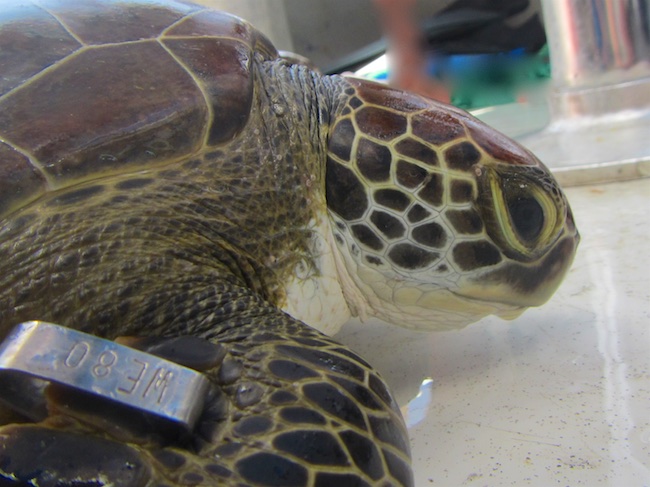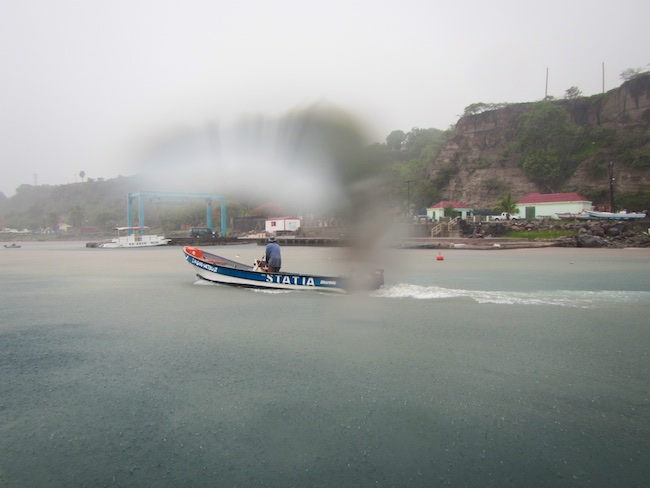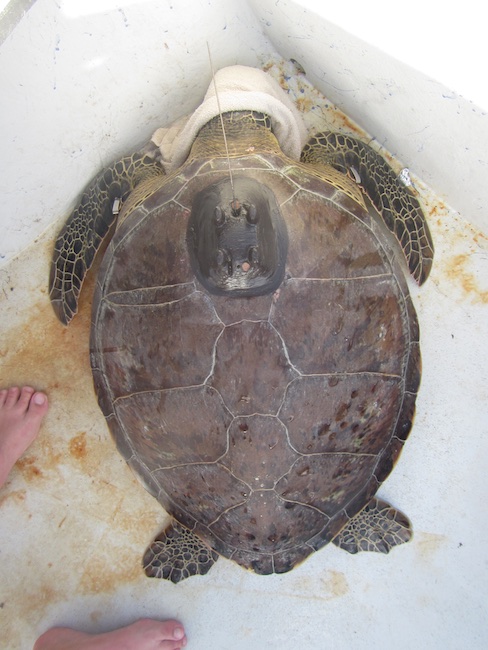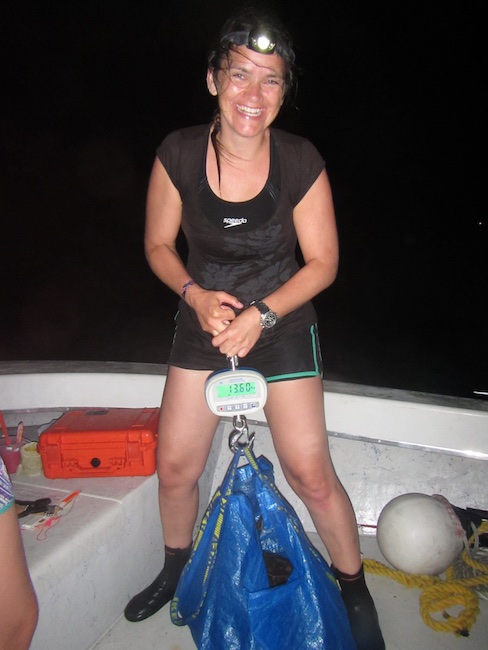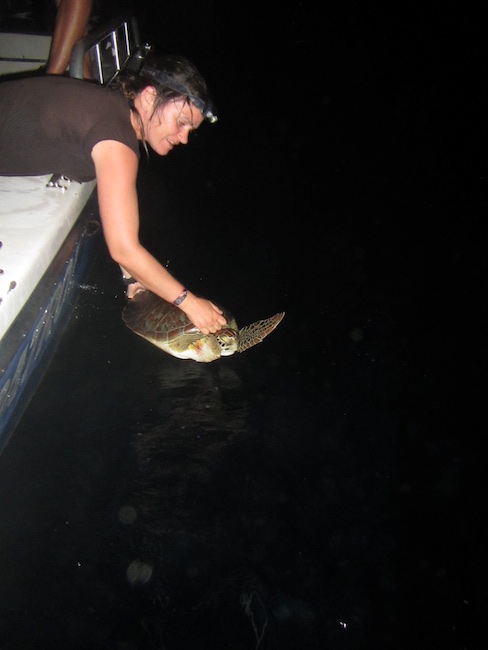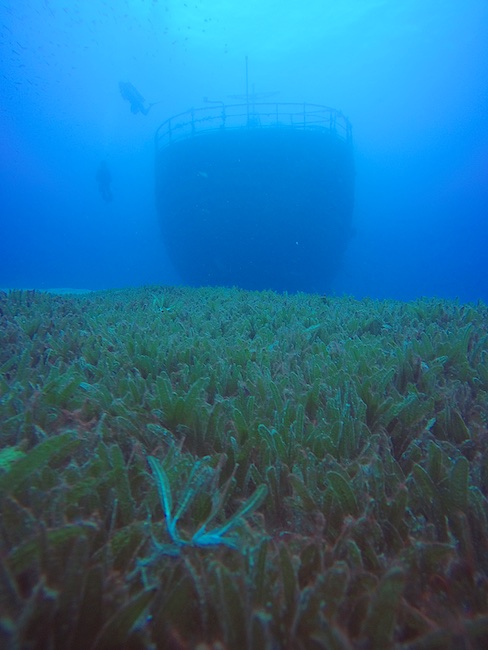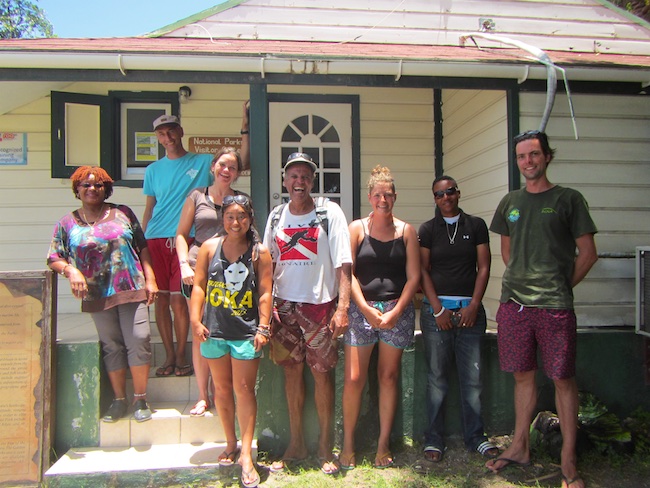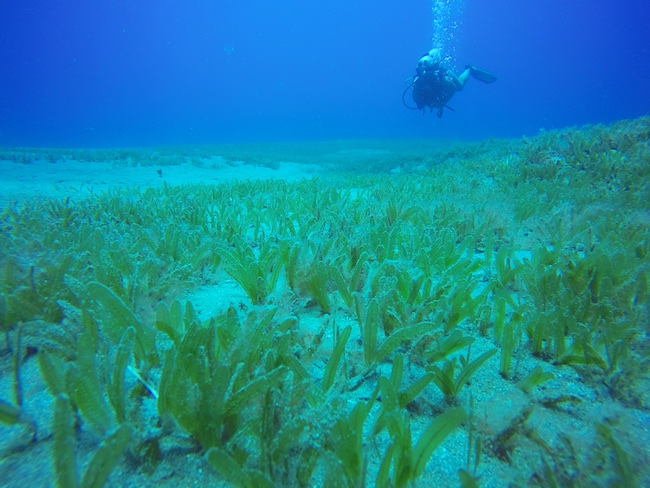Our in-water survey of sea turtles and their habitats in St. Eustatius (a.k.a. “Statia”) was very successful. We aimed to collect data to analyse the habitat use and population connectivity of green and hawksbill turtles as part of a larger NWO research program encompassing the 6 Dutch Caribbean Islands.

Together with STENAPA (National Park authority of St Eustatius) and volunteers, and support from CNSI (Caribbean Netherlands Science Institute) we spend 2 weeks in the water (and 1 on the nesting beaches, see other blog-post). We snorkeled many hours to do turtle/habitat surveys and covered the west coast of Statia 2 times (from Venus bay to the botanical gardens). Once we spotted a resting sea turtle, we attempted to catch it while free diving for measurements & sampling. In addition we also catched turtles at dawn and dusk at some of Statia’s wrecks (Chien tong, Stenapa reef) as turtles are gathering there to sleep. As turtles often rest in deep areas (e.g. 25 meters at wrecks) we often used a combination of divers and free divers as an efficient way to catch multiple turtles.
Once on the boat turtles were measured, sampled and some sub-adult turtles were deployed with satellite transmitters (fastloc Splash10) to follow their habitat movements and dive profiles. This was the first time in-water work on Statia was attempted. Although conditions were not always ideal, especially due to the deep foraging grounds, we look back at a very successful field campaign. We especially thank STENAPA staff and intern Jessica, Melvina, Nadio, Eric, Clarissa, Elly for their great efforts during the in-water work. See video’s and photo’s below!
The time-lapse video is not great but gives you an idea of the 1.5 hr process it takes. it includes sandpapering & cleaning the carapace, attaching the tag on with epoxy, drying and painting the tag with black antifouling (not visible in video) before releasing the turtle back into the water.
after 1 day she was still happily swimming around at the same divesite. But now with some bling and a fancy Fastloc GPS transmitter, see below.
More updates on the positions of these turtles will be shared soon on this blog. Sponsors who are committed to sea turle conservation and who want to support the project, can adopt one of the sea turtles with a transmitter on their back, name them and share its tracks. All proceeds from the adoption program go to STENAPA’s turtle program. Call for more information the STENAPA office +599 318 2884

